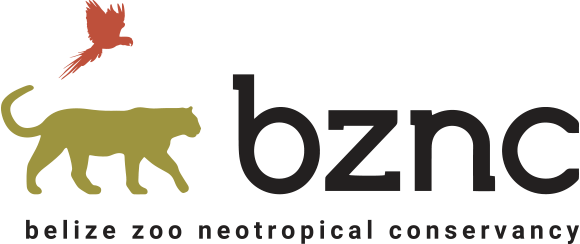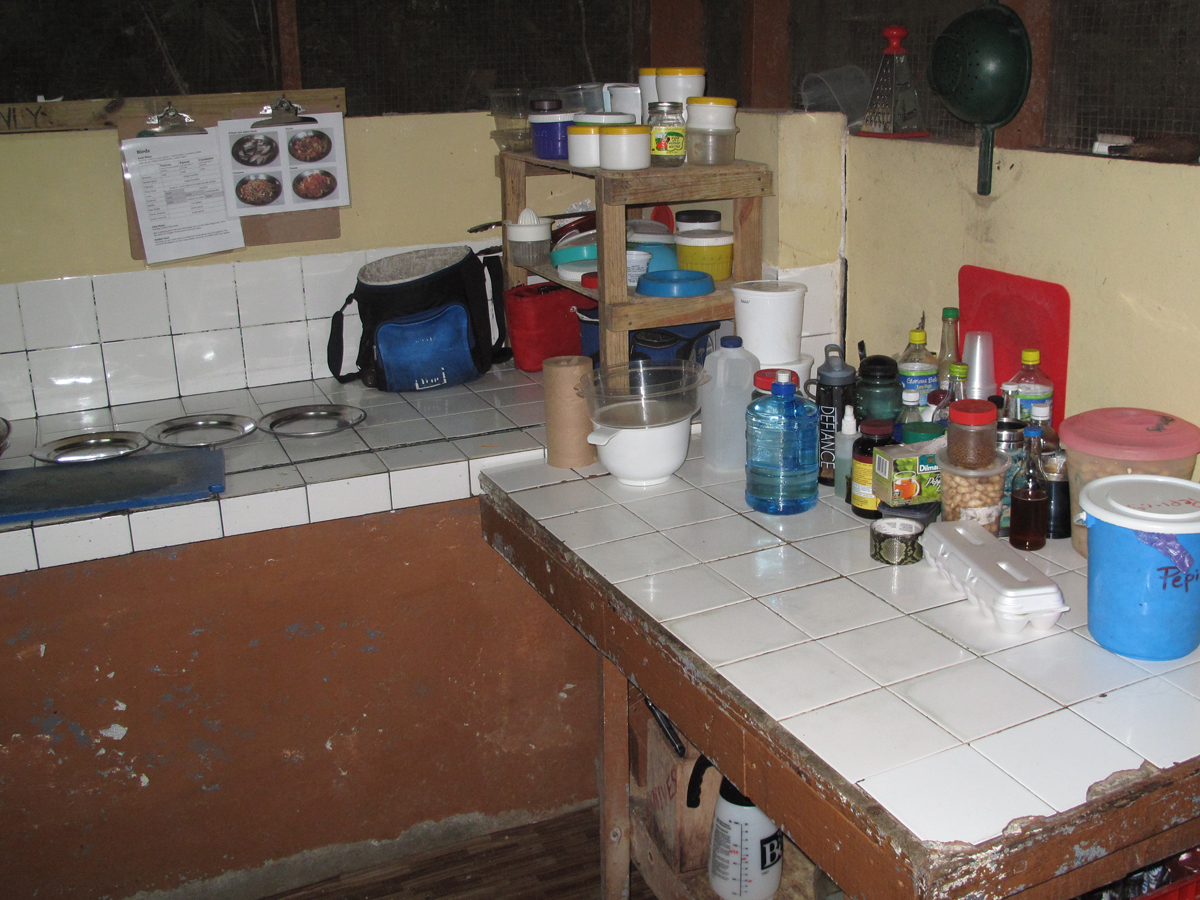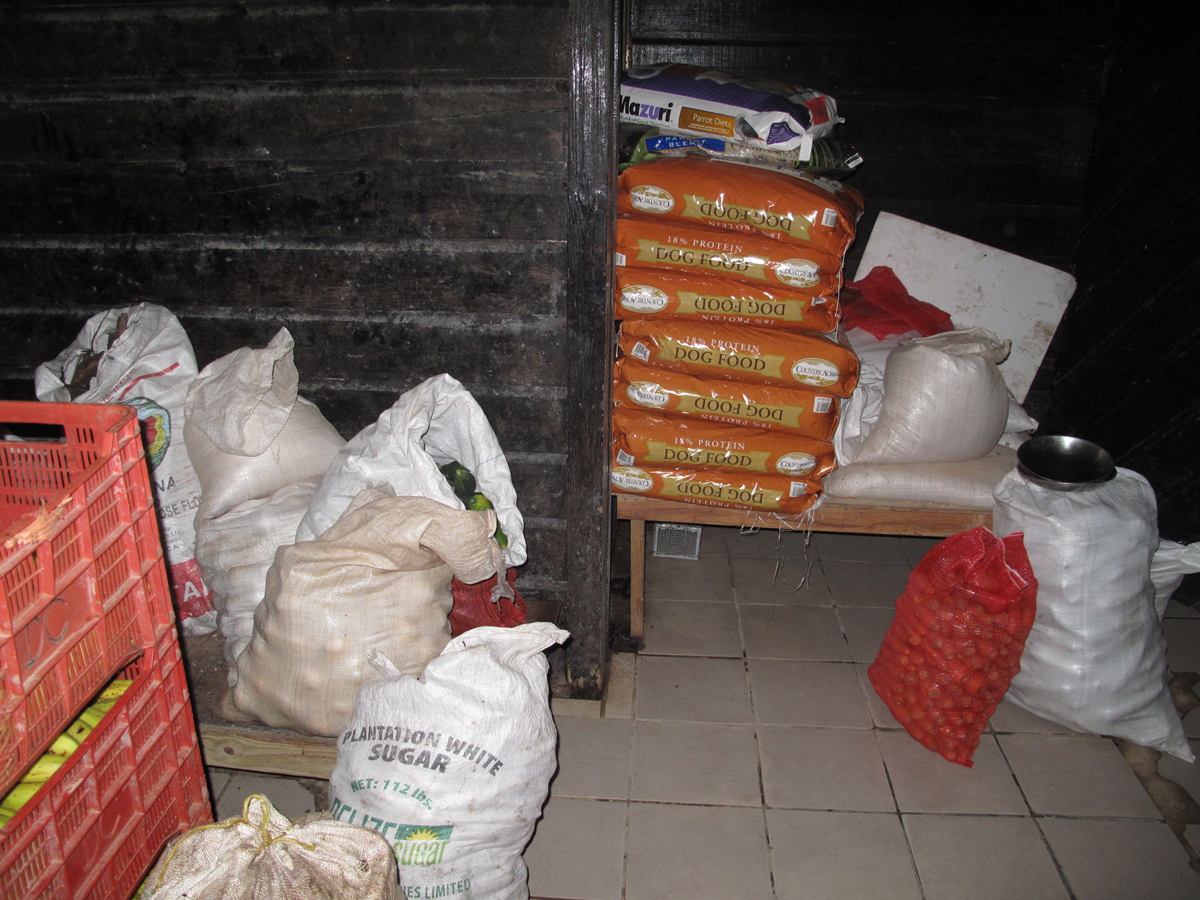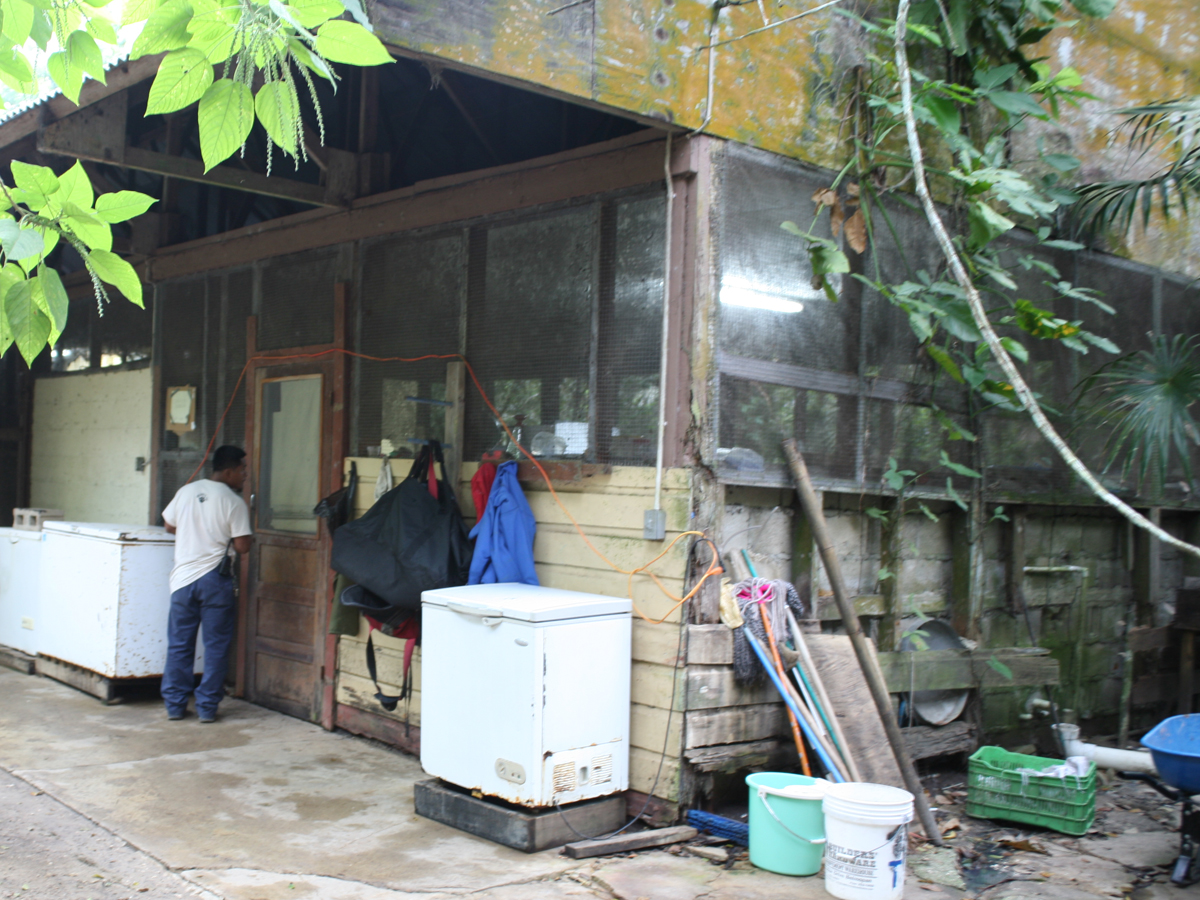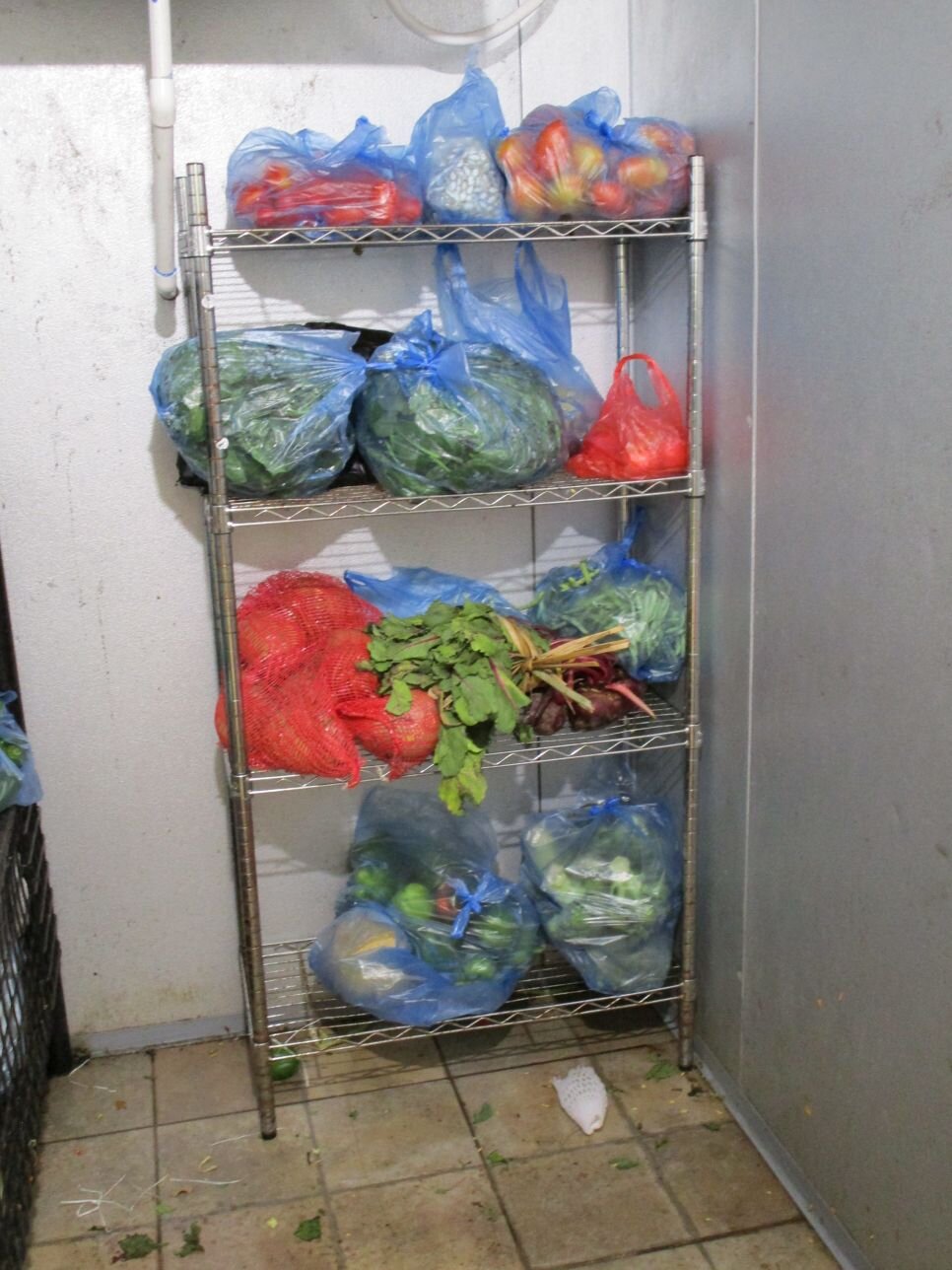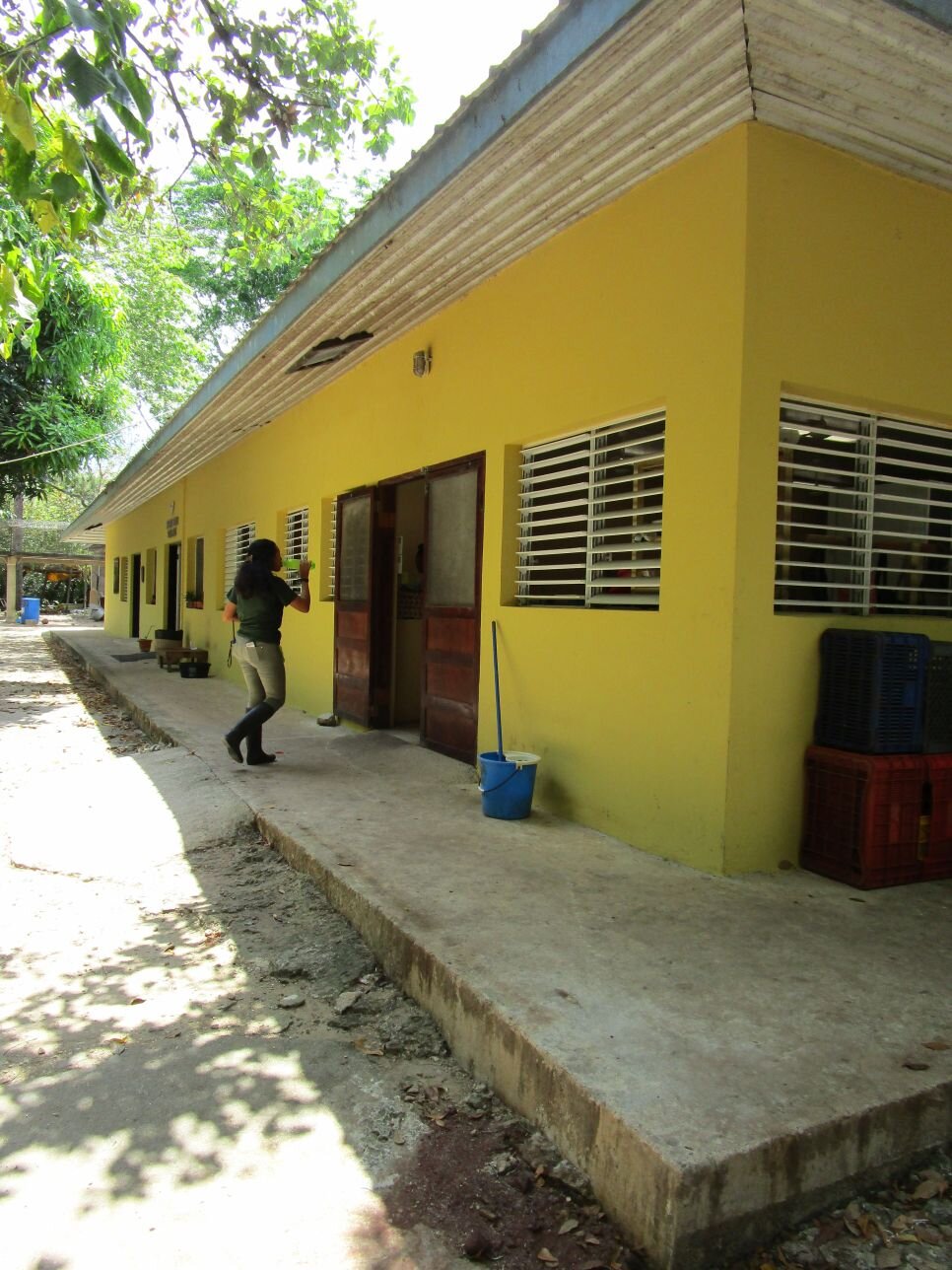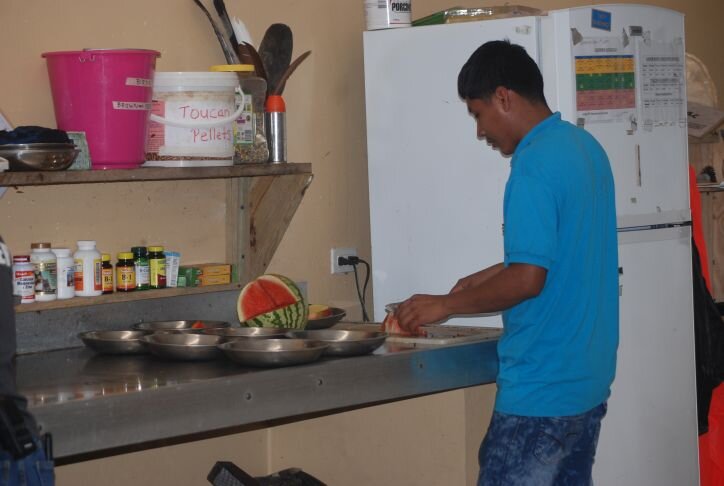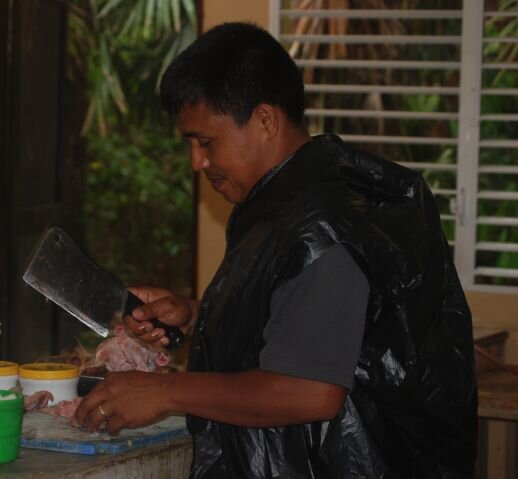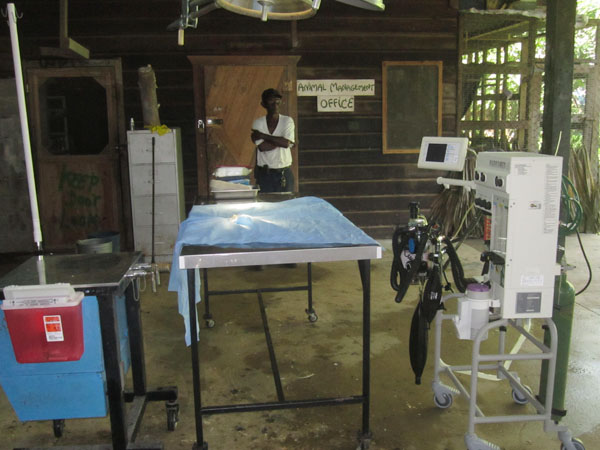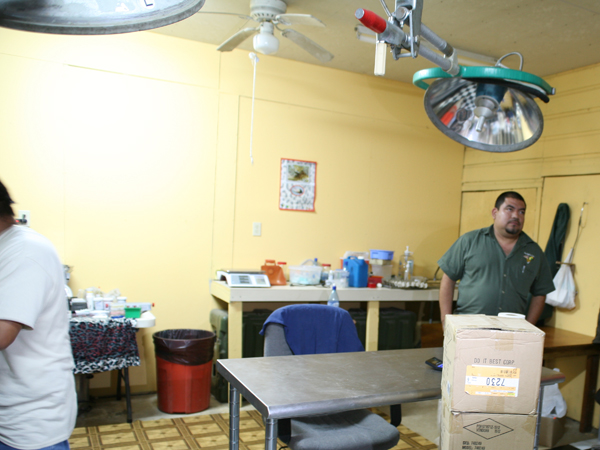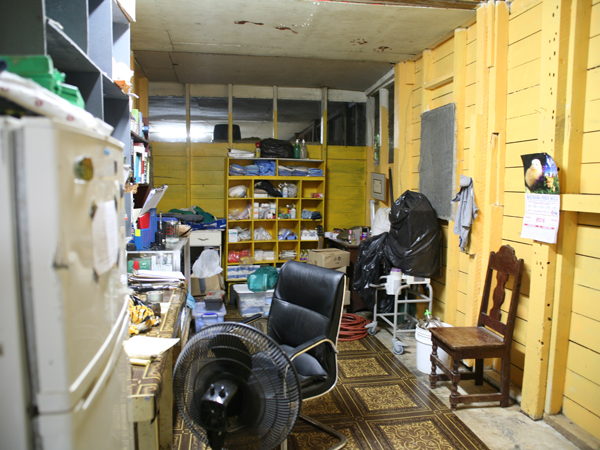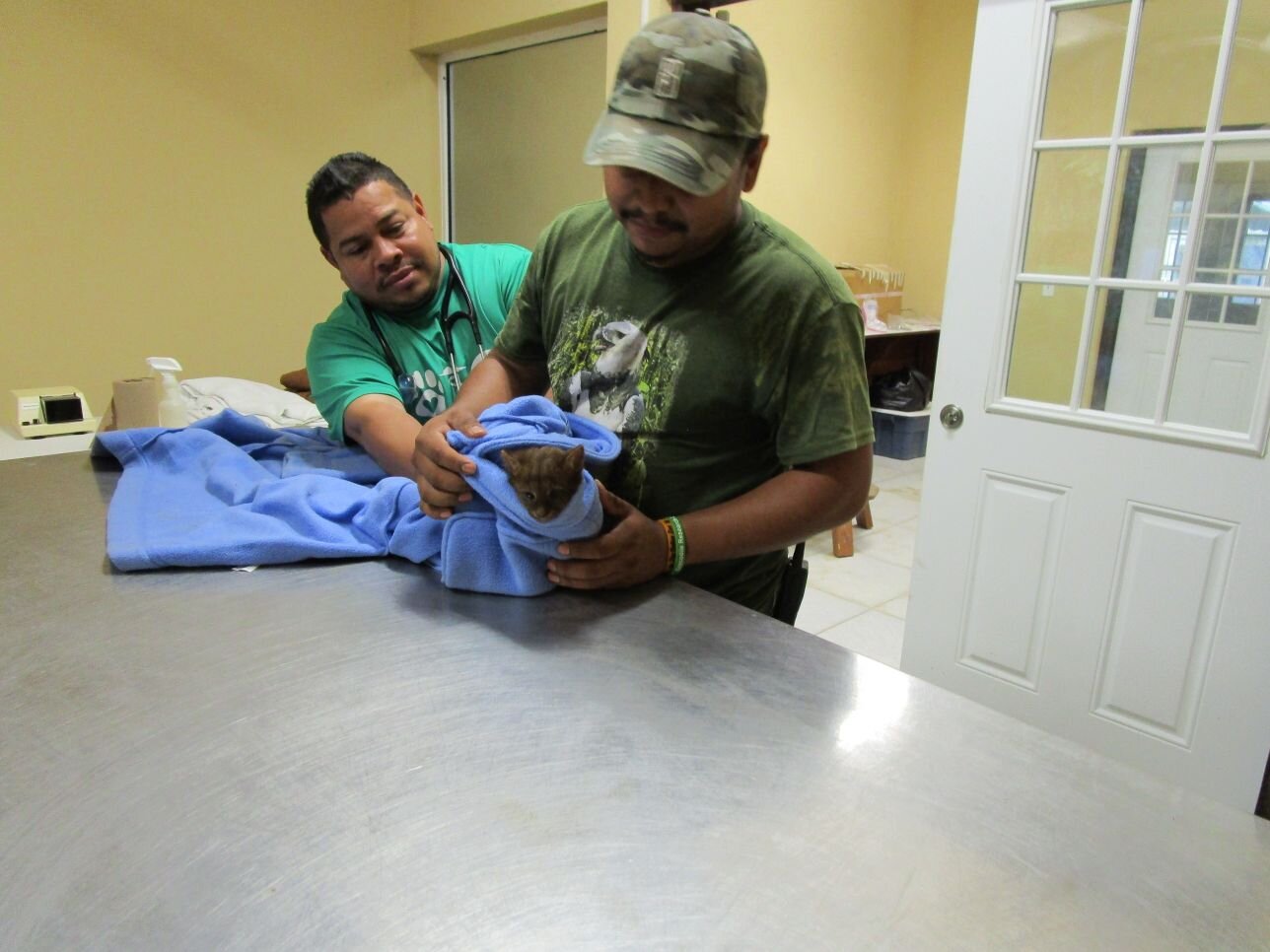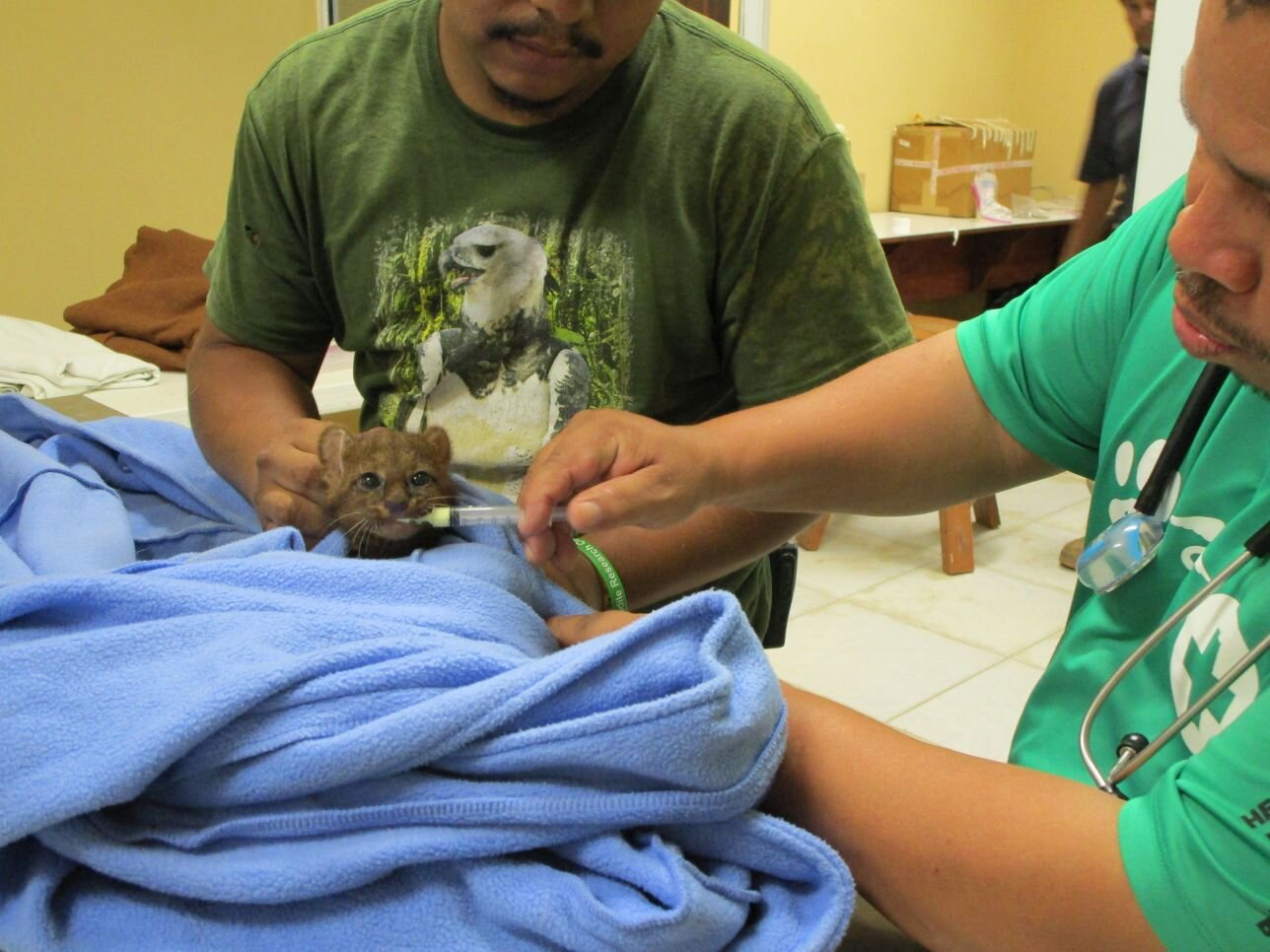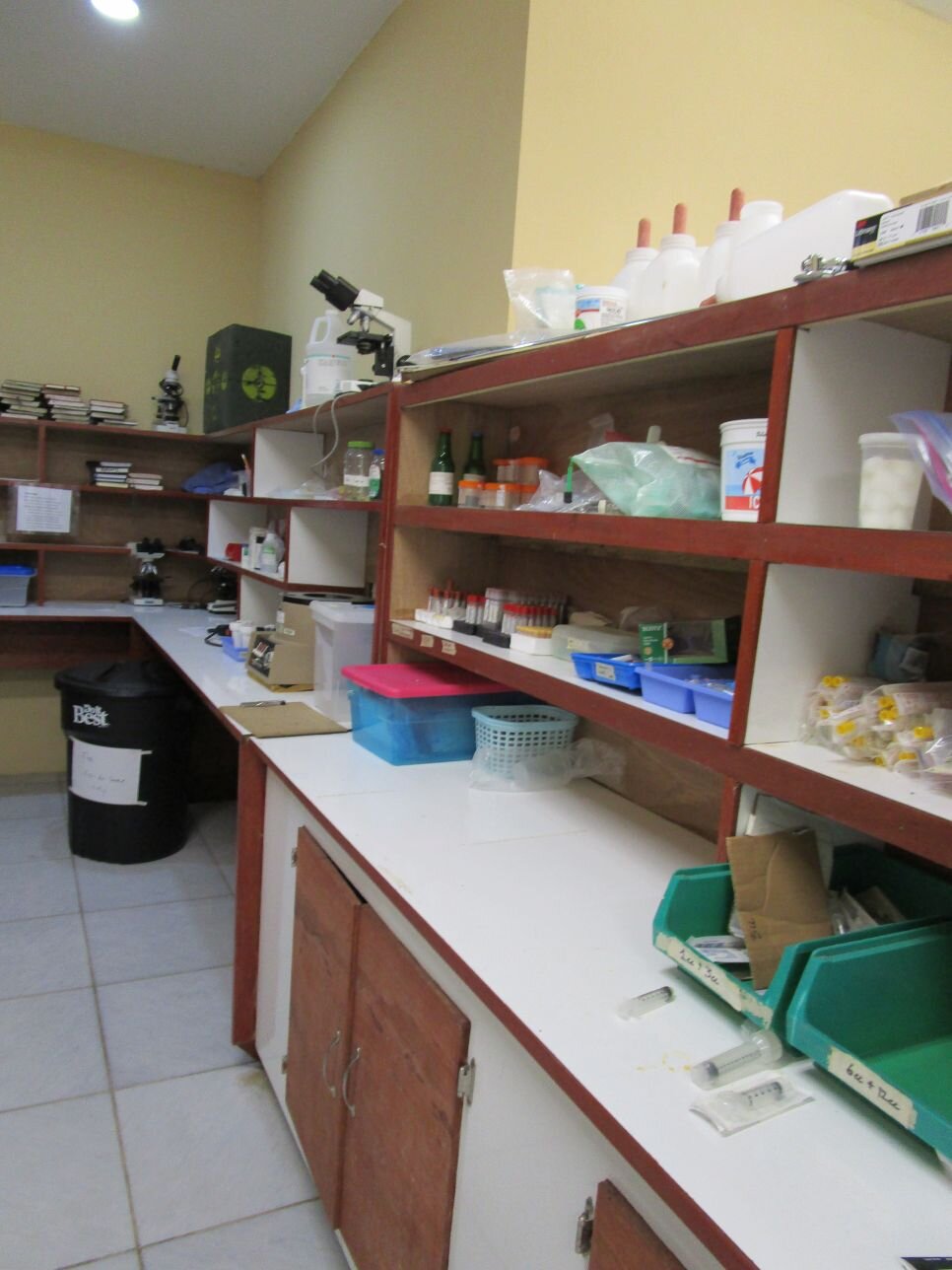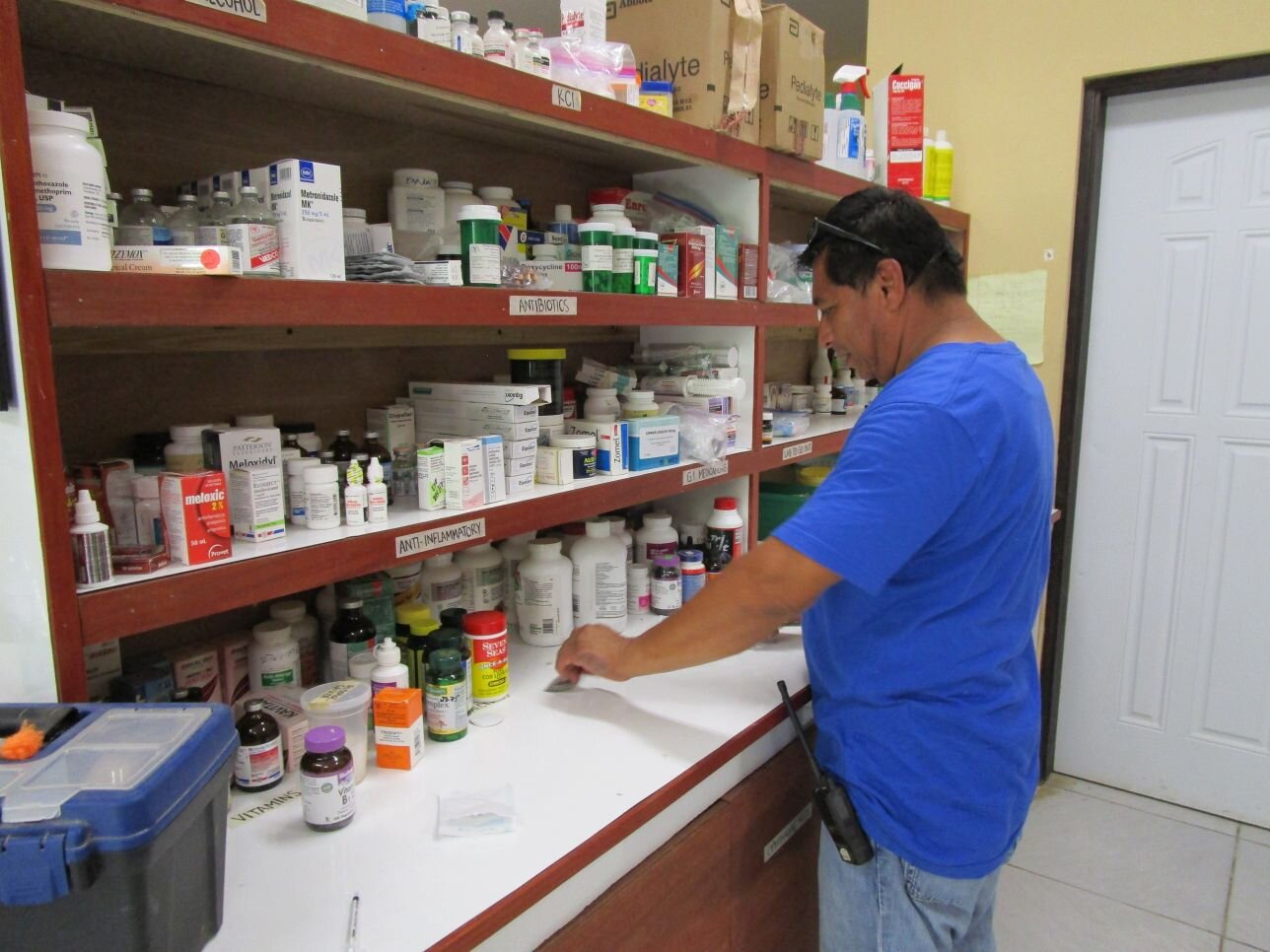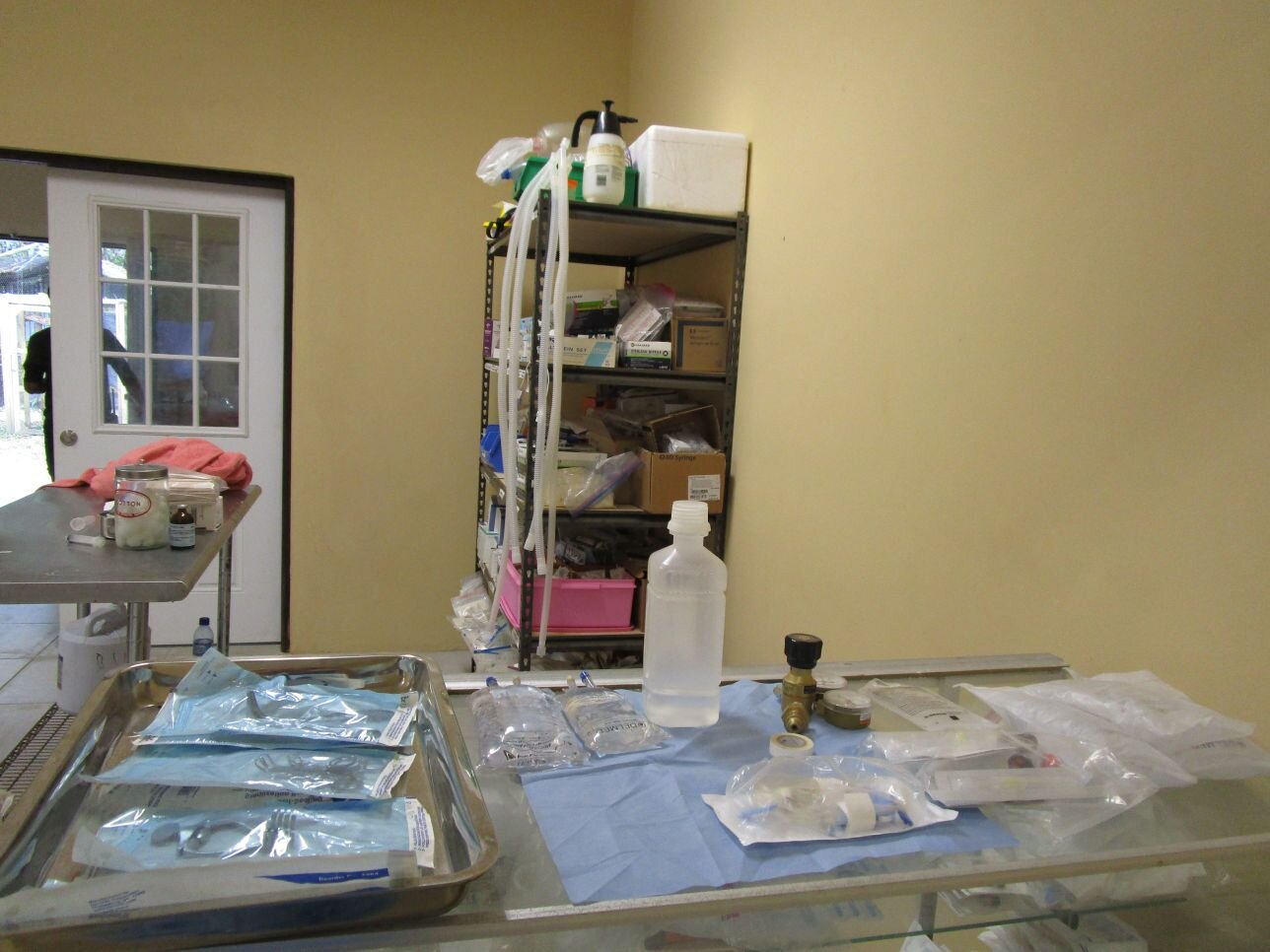Your donations of $100,000 helped to create a legacy. The 3,471 square-foot state-of-the-art Belize Zoo Veterinary Clinic and Commissary opened in June 2018. This new facility ensures that hundreds of animals receive the very best medical care. The Belize Zoo (TBZ) and Tropical Education Center marked this incredible milestone with a special ceremony in the company of colleagues and friends. TBZ is now able to provide exemplary nutrition and veterinary services for their wildlife, as well as vital training and capacity building for their zookeeping staff and local and international wildlife care partners.
- a state-of-the-art surgical suite
- pharmacy
- laboratory
- preparation room
- conference rooms
- two large walk-in coolers which allow meat and fruit to be stored separately
- a dry feed storeroom which keeps the foods dry and free of moisture
- separate food preparation areas for fruits, meat and fish
- The meat/fish counter has a sink and drain so that it can easily be washed down and cleaned
Sharon Matola, TBZ Founding Director emphasized the importance of the new facility: “The Belize Zoo …now regularly hosts vet schools from Cornell University, Midwestern University College of Veterinary Medicine, Ross University School of Veterinary Medicine, and the University of Tennessee College of Veterinary Medicine. Not only do our visiting professional vet teams gain immense experience by undergoing procedures on wildlife which is not usual for their vet agenda, but our animal management staff is empowered by the wildlife vet procedures which are put into action. They all learn so much. With the exciting addition of our new Vet Clinic, we are so pleased that wildlife medicine, and quality animal care, will be a point of strength in the rising star profile of The Best Little Zoo in the World.”
Dr. George Kollias Jr., Professor Emeritus of Wildlife Medicine at Cornell University who assisted with the design of the new facility stated:“The development of the clinic was key to the continued overall advancement of the animal health program at the zoo by virtue of improved diagnostic and treatment options for the animals there and for similar indigenous species brought in by the public or Belizean wildlife and forestry agencies.” Dr. Kolias’ involvement was honored in the opening ceremony.
The Belize Zoo Commissary (before)
Feeding a high-quality diet that is prepared in a safe and sanitary environment is vital to the health and well-being of the 217 animals that reside at The Belize Zoo.
While standards were high, the outdated original commissary desperately needed to be brought up to a modern zoo expectation.
The Belize Zoo Commissary (after)
With the support of the BZNC and our donors, the new commissary meets the criteria of the universal zoo model.
The Belize Zoo Clinic (before)
While the zoo continued to rescue injured, displaced or discarded animal species that are so important to the ecology of the Belize Wildlife Corridors, they did so with the most minimal of modern equipment. The new state-of-the art Veterinary Clinic was essential to provide the most up to date medical care for all of the animals.
The Belize Zoo Clinic (after)
How you can CONTINUE TO help:
By donating to purchase a digital radiography (x-ray) machine. The cost of a modern digital radiography (x-ray) system is $97,500. This will allow for quick and professional images for any zoo animal needing x-rays.
Any amount you can give is greatly appreciated and will go towards improving and saving the lives of The Belize Zoo's animals.
Dr. George Kollias Jr., Professor Emeritus of Wildlife Medicine at Cornell University and Humberto Wohlers, Belize Zoo General Curator emphasized the importance of a digital x-ray machine: “Having the ability to take high quality x-rays is basic to, and part of, all preventative and interventional animal health programs in zoos and wildlife centers. Additionally, digital radiography allows for real-time imaging and decreases anesthesia duration dramatically since the images can be viewed, stored and edited within seconds vs within 20-30 minutes with plain (traditional) radiography, decreasing patient morbidity and mortality. The images are better than the older analog x-rays. If necessary, the digital x-ray machine can be moved from the Vet clinic into the area of the Zoo where the animal is located so that x-rays can be done without moving the animal to the Vet Clinic.”
Read the Cornell Chronicles article about “Veterinary college partners open new clinic at Belize Zoo” here.
